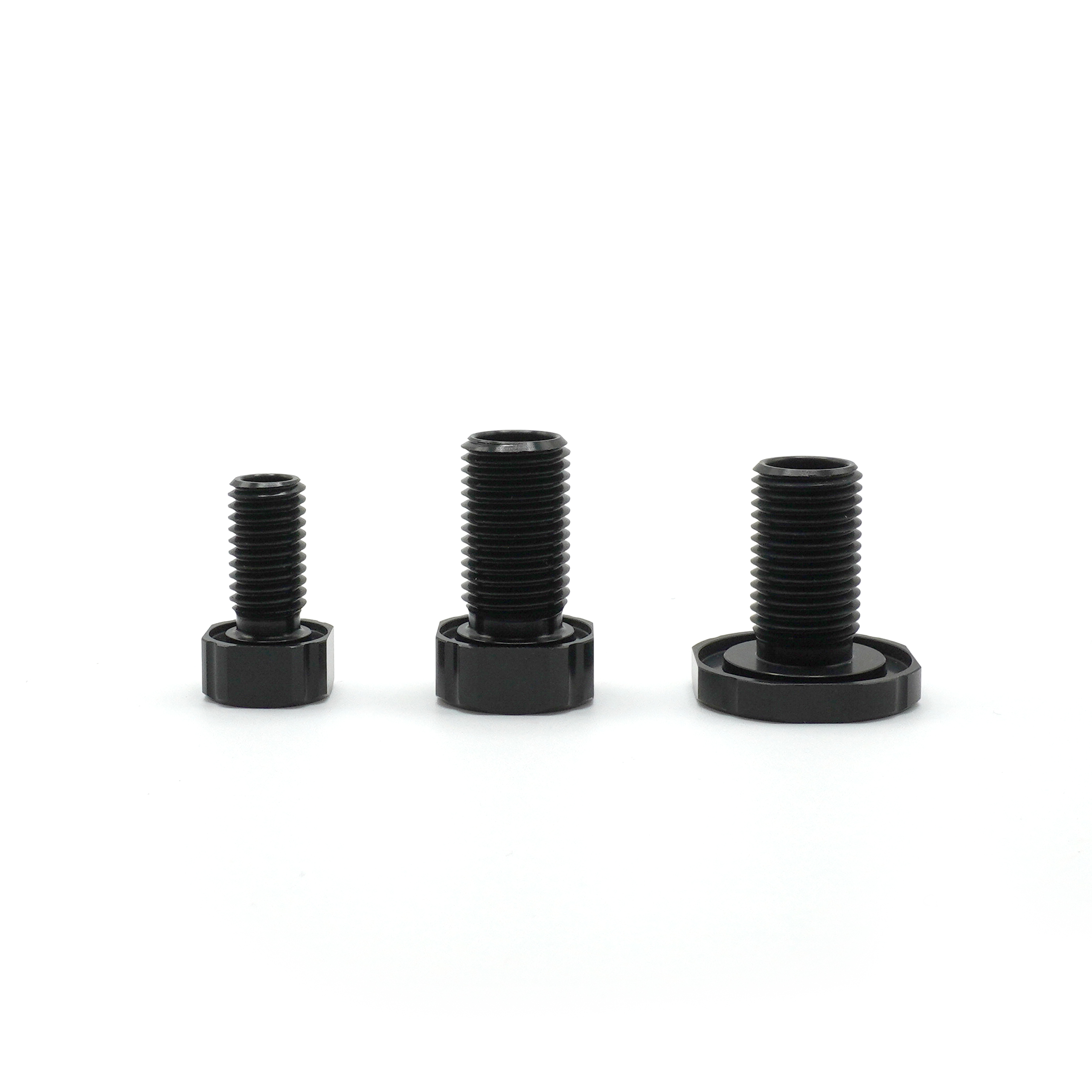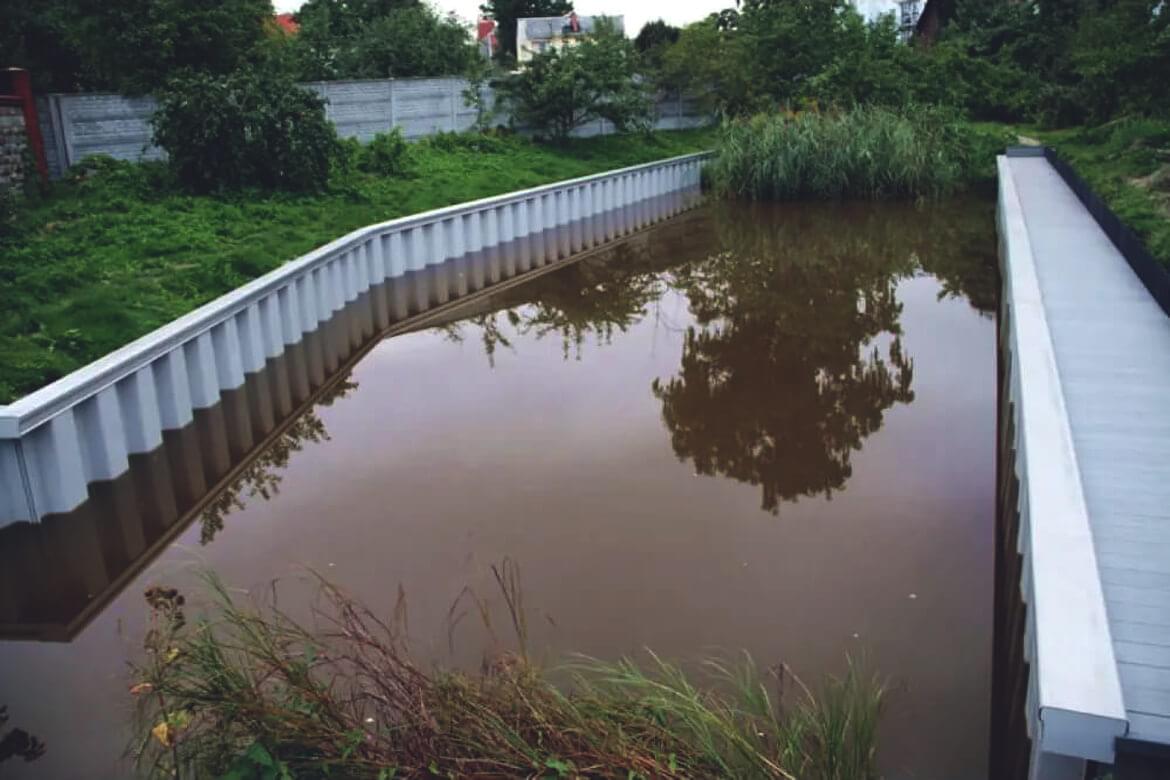Discovering the Different Uses of Bulkhead Frameworks in Modern Design
Bulkhead structures play a substantial role in contemporary design, serving both visual and useful functions. They can define spaces, improve storage space services, and boost lights. In industrial settings, they serve as centerpieces that reflect brand identity - Bulkhead on Lake Livingston. Furthermore, their integration often sustains sound monitoring and sustainable practices. Comprehending the full extent of their applications exposes much about modern style patterns and individual experience. What innovative uses of bulkheads might arise in the future?
Specifying Bulkhead Frameworks
Bulkhead frameworks play a crucial duty in contemporary architecture, acting as vital parts in different building styles. These structures are usually defined as raised ceilings or platforms, commonly used to hide mechanical systems, electrical wiring, or plumbing. Bulkheads can be found in both business and property setups, where they supply a seamless blend of functionality and looks. Their style can integrate illumination fixtures and various other attractive aspects, boosting the total aesthetic appeal of a space.
Typically created from products such as timber, metal, or drywall, bulkheads can be personalized to fit the building style and needs of the building (Bulkhead on Lake Livingston). They serve not just to hide unsightly facilities but likewise to develop specified zones within open areas. By handling the flow of an area, bulkheads add to the spatial organization, making them a considerable element of modern architectural method. Subsequently, their definition envelops both useful and aesthetic dimensions
Useful Applications in Residential Style
Bulkhead frameworks play a vital duty in residential style by promoting room optimization methods that maximize functional locations. They contribute aesthetic design components that improve the aesthetic allure of living spaces. Additionally, these frameworks offer essential structural support solutions, ensuring the stability and safety and security of the home.
Space Optimization Techniques
As contemporary household designs progressively prioritize effective use space, innovative techniques emerge to take full advantage of capability without sacrificing appearances. One prominent strategy entails the assimilation of bulkhead frameworks, which can delineate locations while providing vital storage space remedies. These structures can be used to develop upright storage devices that enhance both company and access. Furthermore, multi-functional furnishings, such as collapsible tables and convertible sofas, complements bulkhead designs, allowing rooms to adapt to differing needs. Open layout additionally optimize spatial flow, encouraging flexibility in usage. Incorporating built-in shelving and recessed lights within bulkheads also adds to a streamlined atmosphere, guaranteeing that every square inch of space is used properly and harmoniously within the overall design.
Aesthetic Design Aspects

Structural Assistance Solutions
In modern-day residential design, a reliable structural support option is crucial for maintaining the integrity of areas while maximizing design and functionality. Bulkhead frameworks play a significant function in this situation, functioning as both assistance and partitioning aspects. They can hide mechanical systems, such as pipes and electrical circuitry, while giving support to the ceiling and floor systems. By tactically placing bulkheads, architects can create specified locations within open floor strategies, improving use without compromising architectural stability. Furthermore, these structures can fit lights components, contributing to both visual appeals and functionality. To summarize, bulkhead structures are indispensable in property style, offering functional support services that enhance both the functionality and aesthetic charm of living spaces.
Enhancing Aesthetics in Industrial Spaces
When industrial areas welcome innovative bulkhead frameworks, they not just specify physical borders yet likewise considerably boost the overall aesthetic appeals of the atmosphere. These building aspects work as aesthetic prime focus, attracting attention and producing a feeling of intrigue. By incorporating diverse products such as metal, glass, or wood, bulkheads can show a brand name's identity and objective, adding to a cohesive layout.
In addition, the tactical positioning of bulkheads can manipulate light and shadow, including depth and dimension to otherwise flat rooms. This interaction can transform a commercial location right into a welcoming ambience, motivating client involvement. Additionally, making use of color and appearance in bulkhead layout can stimulate particular emotions, boosting the overall customer experience. Ultimately, the thoughtful assimilation of bulkhead structures raises the aesthetic charm of business spaces, making them not only useful but likewise aesthetically captivating, thus fostering an enduring perception on visitors.
Acoustic Performance and Noise Monitoring
Efficient acoustic performance plays a crucial function in modern design, specifically within business spaces where sound administration is important. Bulkhead frameworks can significantly enhance their explanation acoustic top qualities by soaking up audio, lowering echo, and mitigating sound transfer between areas. These functions are especially helpful in settings such as dining establishments, cinemas, and offices, where clear interaction and an enjoyable acoustic experience are critical.
The tactical positioning and design of bulkheads can help create sound-buffer areas, efficiently separating loud locations from quieter ones. Materials made use of in bulkhead building, such as soft surfaces and acoustic panels, add to their sound-dampening abilities. Furthermore, the unification of bulkheads permits the combination of sound-absorbing elements without jeopardizing visual appeal. By resolving acoustic performance, architects can produce unified environments that enhance convenience, improve user experience, and promote performance, making bulkheads a vital element in the style of contemporary industrial spaces.
Integrating Bulkheads for Reliable Area Use
Often ignored, the combination of bulkheads in architectural style can considerably enhance area use in modern structures. These structural aspects serve multiple sensible purposes, providing a way to hide mechanical systems, electric wiring, and pipes without compromising aesthetics. By tactically positioning bulkheads, engineers can develop specified areas within open layout, consequently helping with much better company and circulation.
Bulkheads can incorporate storage remedies and lights features, making best use of the functionality of otherwise thrown away vertical space. In residential settings, they may mark zones such as kitchens or living areas, while in commercial areas, they can boost the efficiency of formats by plainly noting paths and workspace.
Eventually, the thoughtful assimilation of bulkheads adds to an extra visually enticing and organized atmosphere, enabling adaptable rooms that can progress with the demands of their residents. This method not only optimizes area but likewise fosters an extra harmonious interaction between form and function.
Bulkheads in Public Design

Building Visual Enhancements
While numerous architectural elements purpose for functionality, bulkheads in public architecture serve a double purpose by boosting visual allure. These frameworks often develop visual interest via their style, integrating effortlessly with bordering components. By using different products, appearances, and colors, bulkheads can contribute to a distinct identity for public rooms, such as airport terminals, galleries, and collections. Their calculated positioning helps to mark areas, assisting visitors while adding you could check here depth to the general design. Furthermore, bulkheads can emphasize lighting, producing vibrant ambiences that change throughout the day. This visual improvement not just elevates the visitor experience yet also fosters a feeling of area, making bulkheads an important factor to consider in contemporary public style. Generally, bulkheads embody the combination of kind and feature.

Structural Assistance Solutions
As engineers look for innovative means to improve the architectural integrity of public spaces, bulkheads become necessary elements in the design and building and construction procedure. These frameworks give important assistance, particularly in locations based on hefty foot website traffic or vibrant tons. By try this web-site dispersing weight uniformly, bulkheads help protect against structural failure while enabling versatile style alternatives. In huge venues, such as stadiums and convention centers, bulkheads are commonly incorporated into the total building framework, making certain stability and security. Furthermore, they can help with the unification of utilities and mechanical systems, adding to the effectiveness of space use. Inevitably, bulkheads stand for a vital solution in contemporary public design, strengthening both performance and security in community-focused atmospheres.
Environmental Protection Procedures
Integrating environmental management measures into public style has come to be significantly vital as urban developers prioritize sustainability alongside architectural support. Bulkhead frameworks serve a twin function hereof, serving as barriers versus disintegration and flooding while simultaneously boosting the visual appeal of metropolitan landscapes. Their layout typically consists of natural elements such as plant life, which can improve air quality and provide habitats for wildlife. Furthermore, bulkheads can be engineered with permeable products that enable water absorption, decreasing drainage and advertising groundwater recharge. This combination of environmental considerations not just preserves the atmosphere but also promotes area resilience versus climate adjustment. By making use of bulkheads efficiently, engineers contribute to sustainable urban growth that lines up with contemporary ecological objectives.
Future Fads in Bulkhead Layout
Arising trends in bulkhead style show a growing emphasis on sustainability, advancement, and functionality in contemporary design. Developers are significantly including environmentally friendly materials, such as recycled compounds and bioplastics, to decrease environmental impact. Additionally, the integration of smart technology is ending up being common, making it possible for bulkheads to serve multi-functional functions, consisting of energy storage and climate control.
In urban settings, modular bulkhead systems are getting grip, using versatility in layout and ease of installment. These systems can be adapted to numerous landscapes, permitting for efficient space usage. Additionally, aesthetic factors to consider are progressing; bulkheads are now being designed to enhance visual allure, frequently including creative components that reverberate with neighborhood society.
As climate resilience becomes a priority, future bulkhead designs will likely focus on flooding defense and stormwater administration, ensuring structural honesty while attending to ecological challenges. This shift symbolizes an alternative strategy to architecture that fulfills both eco-friendly responsibilities and human demands.
Often Asked Questions
What Materials Are Commonly Utilized for Bulkhead Building And Construction?
Common products for bulkhead construction consist of concrete, steel, hardwood, and composite materials. These alternatives offer longevity, architectural honesty, and resistance to ecological variables, making them suitable for various applications in building and engineering jobs.
How Do Bulkheads Influence Building Power Performance?
Bulkheads boost building power effectiveness by supplying thermal insulation and lowering air leak (Bulkhead on Lake Livingston). They assist preserve indoor temperatures, consequently reducing heating and cooling down demands, eventually leading to lower power costs and boosted ecological sustainability
Are There Any Type Of Building Regulations Particular to Bulkhead Structures?
Yes, building codes certain to bulkhead frameworks exist, varying by place. These regulations typically address security, structural honesty, and accessibility, guaranteeing that bulkheads meet called for criteria for building and style within a provided jurisdiction.
Can Bulkheads Be Easily Changed or Gotten Rid Of Later?
Bulkheads can commonly be modified or eliminated, depending upon their style and building. However, such alterations might need careful planning and adherence to building regulations to guarantee architectural honesty and security are maintained throughout the procedure.
What Are the Expenses Related To Installing Bulkhead Frameworks?
The expenses associated with mounting bulkhead structures can differ significantly, usually influenced by products, style complexity, and labor. Typically, costs range from moderate to high, relying on the job's particular requirements and area.
Bulkhead structures play an important function in modern-day design, offering as vital elements in different building layouts. Bulkhead frameworks play a vital duty in domestic style by facilitating area optimization approaches that make best use of usable areas. Commonly overlooked, the assimilation of bulkheads in building layout can greatly improve space usage in modern-day structures. As engineers look for cutting-edge methods to boost the architectural stability of public rooms, bulkheads arise as vital elements in the style and building process. The prices associated with setting up bulkhead structures can differ considerably, commonly affected by materials, design intricacy, and labor.